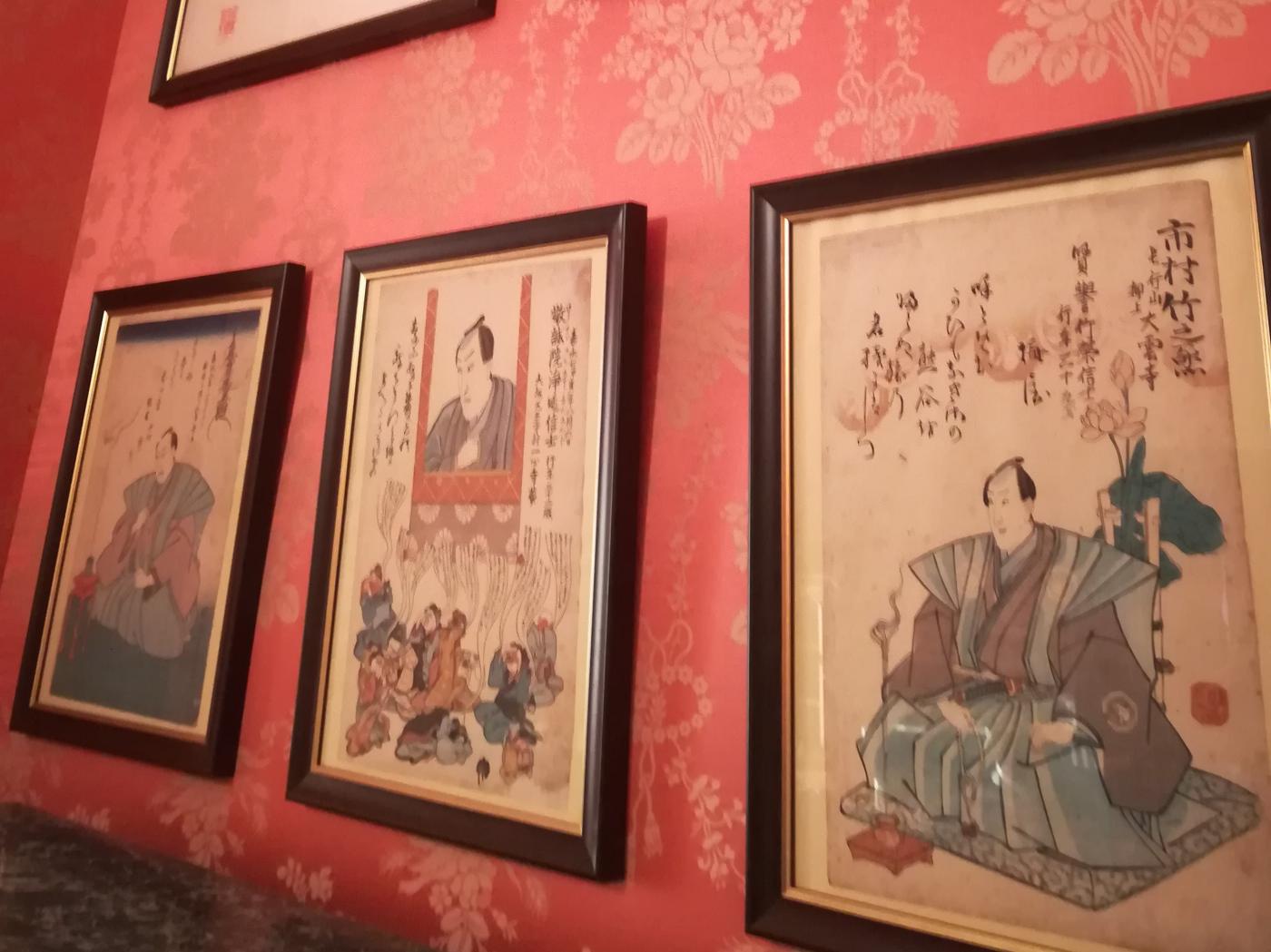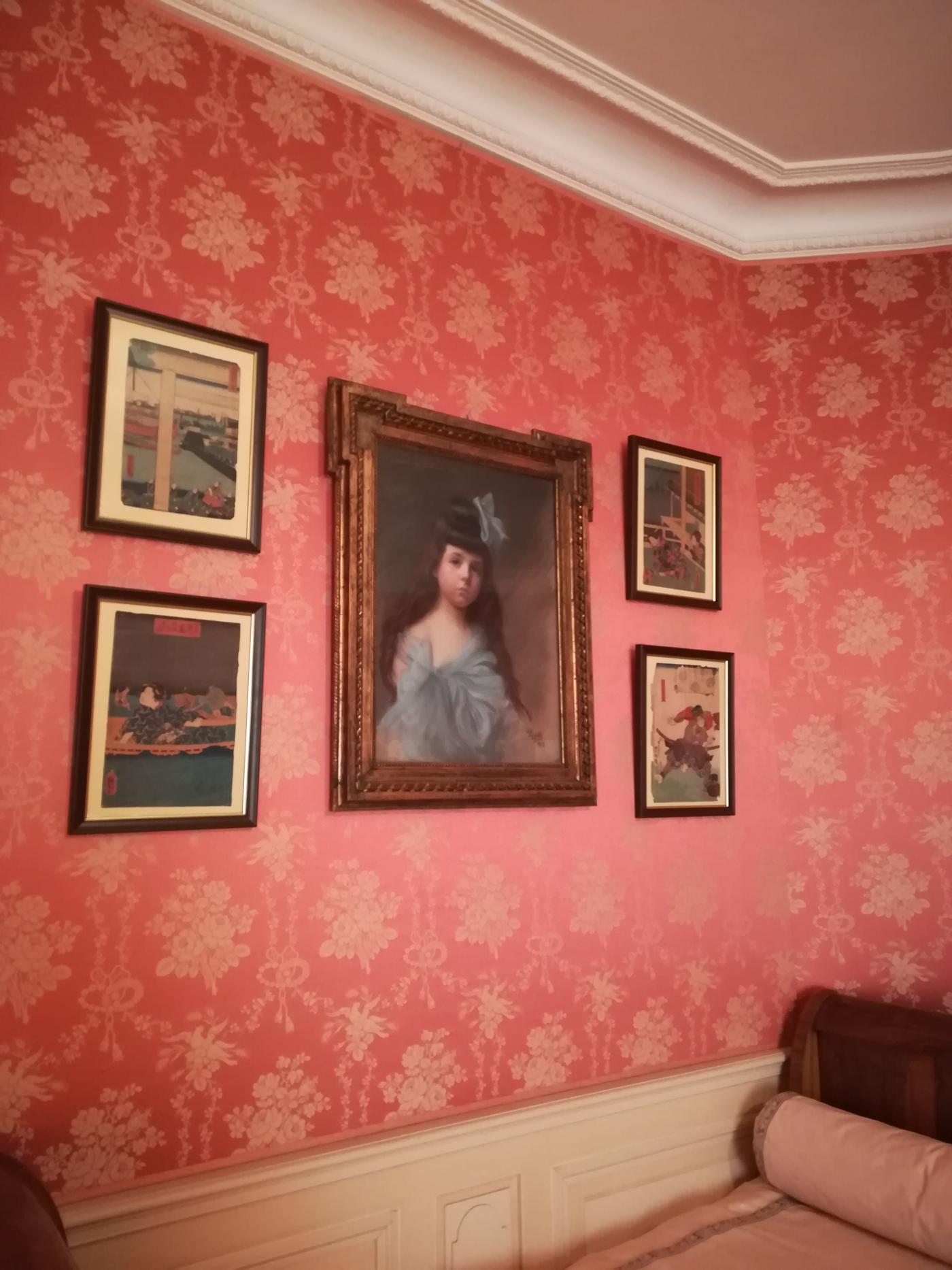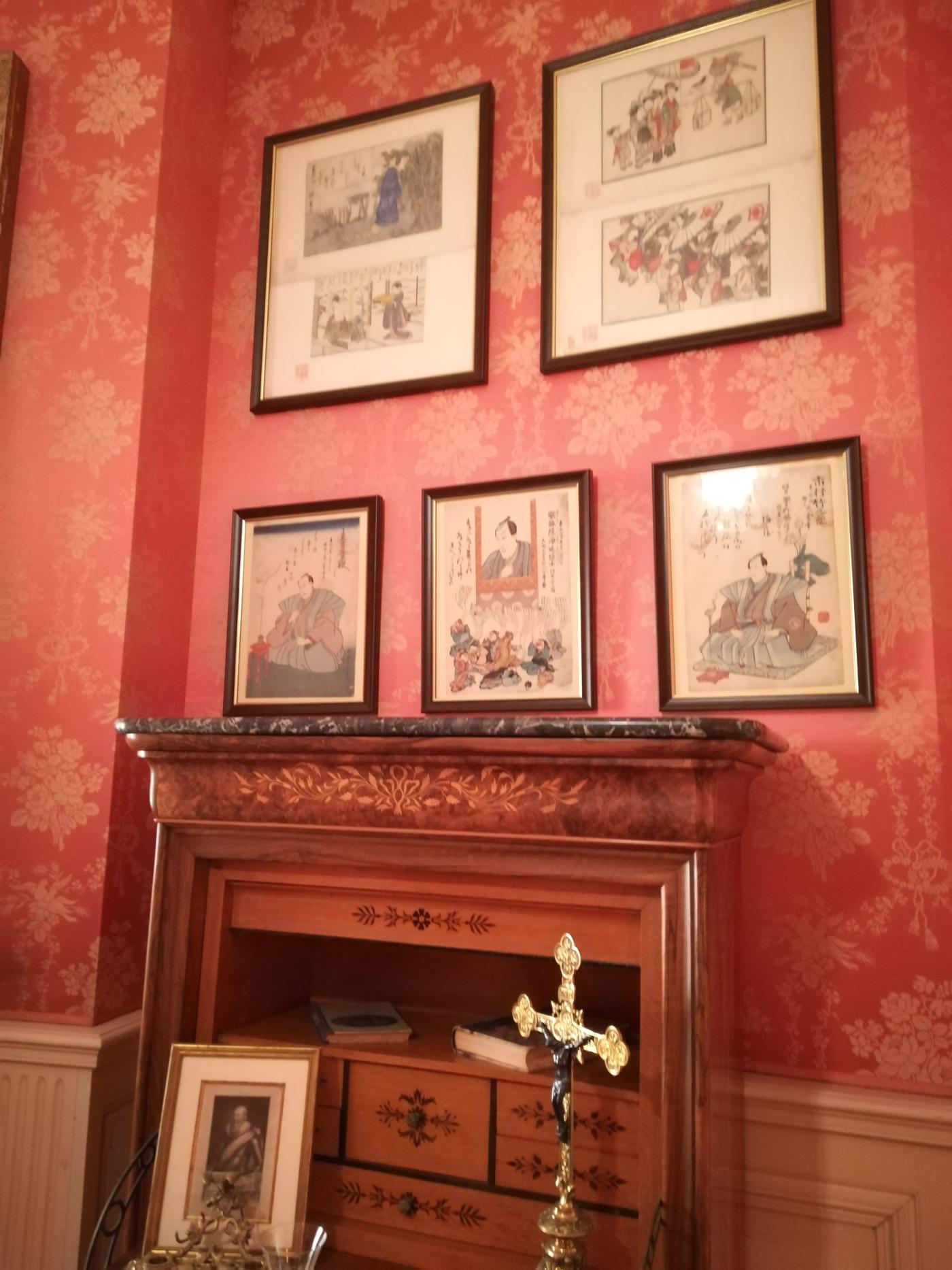Our recently arrived Japanese prints are displayed in the Petit Salon of the castle
An acquisition realised in spring 2022 for a finalised display at the end of 2022. Originally, Japanese prints took centre stage on the walls of this space. With the collections having been dispersed, we wanted to recreate the ambience of this period.
Japanese prints to recreate the ambience of the Petit Salon at the start of the 20th century.
Our latest acquisitions hang in the Petit Salon, a rediscovery of the ambience of the start of the 20th century where a Japanese-inspired air floated around this room.
So, here are our new arrivals at Sully-sur-Loire Castle, our Japanese prints from the 19th century. Acquired using our own funds in spring 2022, these prints were noticed by our collection manager before being branded, dusted and inventoried. It was only after this long process and after some organised research on the method of adding them to the visitors’ route when the hanging could be done on Monday 17 October 2022 in the Petit Salon.
The location was not chosen randomly. In fact, this room, located on the first floor of the Sange Tower, at the south east corner of the building, along the river which bears the same name, used to be the so-called “Virgins” room, a room associated with the Duke’s daughters and the Duchess of Sully. Transformed at the beginning of the 20th century into a small living room, this room offers an ideal setting for our collections. On ancient photographs, we can clearly see that Japanese prints were positioned on the walls. While all the furniture and artwork in the castle have been sold progressively since 1942, we have had our hearts set on recreating the ambience of this room by acquiring these prints at the start of the year. Although we unfortunately lost track of the prints displayed at the beginning of the previous century, our multicoloured acquisitions, nonetheless, allow visitors to re-immerse themselves in the busy and oriental ambience of the room.
Printmaking
Japanese prints are made with a technique called “wood engraving” or “woodcut printing,” which requires the talent of several artists.
First of all, the designer draws the edges of their model with a black line. They will then instruct the printer on the colours used.
Then the printmaker creates several sculptures on blocks of wood and they each have a colour.
As for the printer, they apply the colours to the blocks then position the paper on each block successively. They create what we call “bokashi,” i.e colour gradations.
Finally, there is the publisher who acts like the conductor. It is them who gathers these talents and makes them work together.
These steps are part of the traditional procedure which remained hand-crafted until the start of the 20th century where, during this period, there was the birth of a completely new trend: the “Sosaku-Anga” trend, which means “creative print.” In fact, the artist will design, engrave and print the works themself.
More details on printmaking
In the 20th century, printmaking was completely renewed. With the appearance and development of photography, printmaking artists faced strong competition. At the start of the 20th century, Shozaburo Watanabe, a young artist, noticed a huge demand for Japanese-inspired objects from Europeans and Americans. He would become a printmaking publisher and merchant to fulfil this huge demand. Western influences have been detected in printmaking designs. Westerners wish to have a romantic and idyllic vision of Japan. From 1921, the complete renewal of this style would be called “Shin Hanga,” which means “new print.” The predilection themes are the following: portraits, beautiful women, flowers, animals, landscapes, everything which represents the West: consideration for perspectives, colour gradations and chiaroscuro. This new artistic trend Shin Hanga would be in fashion from 1915 until the 1960s. The artistic movement would disappear following the death of its creator in 1962.
And to conclude
These Japanese prints revisited at the start of the 20th century are proof that artists influence one another. When the West meets the East. Come and admire these prints which proudly hang in our Petit Salon.
Pay close attention because the re-arrangement of the Petit Salon does not stop there. A new marquetry table now takes centre stage (new arrangement dating from the very end of 2022 but that is another story). The next step: earthenware on the walls and cushions on the chairs and seats for an even more cosy, private and busy ambience, which was the norm at the time. So, this refurnishing will be more representative of the living arrangements of the Béthune family, who owned Sully-sur-Loire Castle at the time, at the very start of the 20th century.




